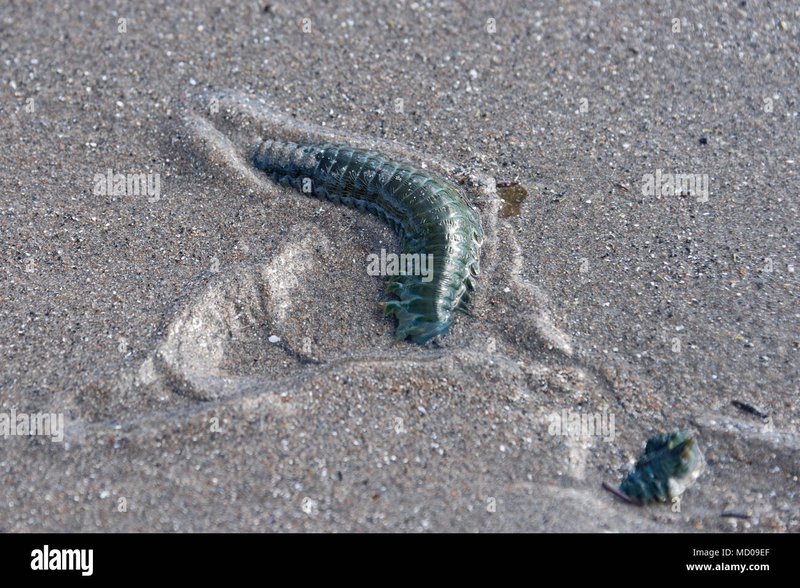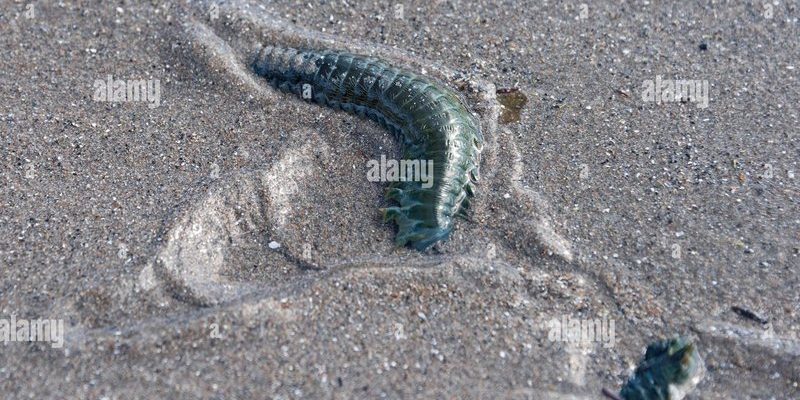
In this article, we’ll explore what threatens the Nereis virens populations, including natural predators and various environmental concerns. Just like any living creature, these little worms have their own set of challenges in the wild, and understanding these can help us appreciate their role in marine ecosystems and consider the health of our oceans. So, grab a cup of coffee, and let’s chat about the life of Nereis virens and the dangers it faces.
Understanding Nereis Virens: The Basics
Nereis virens is a type of polychaete worm, which means it belongs to a group of segmented worms. These creatures are known for their long, slender bodies and colorful bristles that help them navigate through their sandy or muddy habitats. Found along the North Atlantic coast, they play an important role in the marine ecosystem by aerating the sediment and serving as a food source for various animals.
In terms of appearance, Nereis virens can grow quite long—sometimes reaching up to 10 inches! Their bodies consist of many segments, each equipped with parapodia, which are like tiny legs that help them burrow and swim. Imagine these worms as the gardeners of the sea, turning over the soil and ensuring nutrients are recycled back into the ecosystem.
You might be wondering why these charming little worms matter. Well, they’re not just fascinating to observe; they are a crucial part of the food web. By understanding their life cycle and their interactions with the environment, we get a clearer picture of ocean health.
Natural Predators of Nereis Virens
Just like any creature, Nereis virens has its fair share of predators. These predators can be both marine and terrestrial, demonstrating the interconnectedness of ecosystems. Key predators include fish, crabs, and even some seabirds that hunt along the shore.
One of the most common predators of Nereis virens is the rock crab. These crabs have powerful pincers that can easily crush the worm’s soft body. Similarly, fish species such as flounder and striped bass often seek out these worms as a tasty snack. When we think about how many crabs and fish are out there, it’s clear that these little worms have to be vigilant!
Another interesting predator is the greater black-backed gull, which can swoop down and pluck Nereis virens from the sand. This bird is quite clever and knows where to look for these worms, and it uses its sharp vision to spot them from above.
In essence, the predation pressure on Nereis virens is significant, reminding us that nature is all about balance. Each predator has its own role, but an increase in predator populations can lead to declines in Nereis virens numbers.
Environmental Changes Impacting Nereis Virens
While predators certainly pose a threat, environmental changes can have an even more dramatic impact on Nereis virens populations. You might find it surprising to learn that factors like pollution, habitat destruction, and climate change affect these worms and their habitats.
Pollution is a significant concern. When chemicals and waste enter the ocean, they can accumulate in the sediments where Nereis virens live. These pollutants can be toxic to the worms, reducing their reproduction rates and even leading to death. In addition, excess nutrients from agricultural runoff can lead to algal blooms, suffocating the worms by depleting oxygen in the water.
Habitat destruction is another major player in the decline of Nereis virens. Coastal development, like building resorts or marinas, can physically alter their habitats. Dredging operations can tear up the seafloor, stripping away the beneficial environment these worms thrive in. Imagine a bustling city suddenly losing its parks and green spaces; that’s essentially what happens to these worms when their habitat is disturbed.
Lastly, climate change brings rising temperatures and changing ocean conditions. Warmer waters can alter the distribution of Nereis virens, pushing them into less favorable habitats. Furthermore, as sea levels rise, coastal erosion can lead to the loss of the sandy and muddy areas critical for their survival.
Competition for Resources
Competition is an ever-present reality in nature. Nereis virens faces competition from other organisms for food and space. Various species of polychaetes inhabit the same regions, vying for the same resources such as organic matter and detritus.
For instance, other polychaetes like Arenicola marina (the lugworm) can be found in similar habitats and may compete for the same food sources. This competition can become more pronounced in areas with limited resources, especially when environmental conditions are less than ideal.
As the environment changes—driven by both human activity and natural processes—Nereis virens may find themselves at a disadvantage. Increased competition can lead to stress and affect their reproduction and growth rates. If their populations decline, not only do they suffer, but so do the species that rely on them as a food source.
Conservation Efforts for Nereis Virens
Recognizing the threats to Nereis virens populations is the first step in conservation efforts. Various organizations and researchers are working hard to monitor these worm populations and their habitats. By understanding more about their life cycle, reproductive habits, and habitat requirements, we can take steps to protect them.
One effective strategy is establishing marine protected areas (MPAs). These designated zones limit human activities like fishing and development, allowing the ecosystems to thrive without undue stress. MPAs can provide a safe haven for Nereis virens and allow their populations to recover.
Another approach is reducing pollution through stricter regulations on waste disposal and agricultural practices. Implementing better practices can significantly decrease nutrient runoff and protect the habitats where Nereis virens live.
Community engagement is also key. Educating local communities about the importance of maintaining healthy marine ecosystems can lead to greater support for conservation measures. When people understand how Nereis virens contribute to the ocean’s health, they’re more likely to advocate for their protection.
The Role of Nereis Virens in the Ecosystem
Understanding the ecological role of Nereis virens is crucial for appreciating why it’s worth saving. These worms serve as bioindicators, meaning they can provide valuable information about the health of their environment. A robust population of Nereis virens typically indicates a healthy and balanced ecosystem.
Additionally, they contribute to the nutrient cycling in marine environments. As Nereis virens burrow into the sand or mud, they break down organic material, which helps release nutrients back into the water. These nutrients are vital for other organisms, including plants and phytoplankton, which form the base of the marine food web.
Furthermore, by being a food source for a variety of predators, Nereis virens helps sustain the populations of larger animals, ensuring the ecological balance is maintained. You could say that saving the worm is like saving a piece of the ocean’s puzzle; every piece matters.
In conclusion, Nereis virens is more than just a colorful worm wriggling through the sand. It’s a vital part of the marine ecosystem, providing numerous benefits while facing various threats from predators and environmental changes. Understanding these challenges helps us appreciate the delicate balance of marine life and the importance of conservation efforts.
As we navigate our relationship with the ocean, it’s essential to recognize how our actions impact these small yet significant creatures. By supporting sustainable practices and advocating for marine conservation, we can ensure that Nereis virens and all its ocean companions continue to thrive for generations to come. So, the next time you think about the wonders of the ocean, remember the humble sandworm and the vital role it plays in our underwater world.

